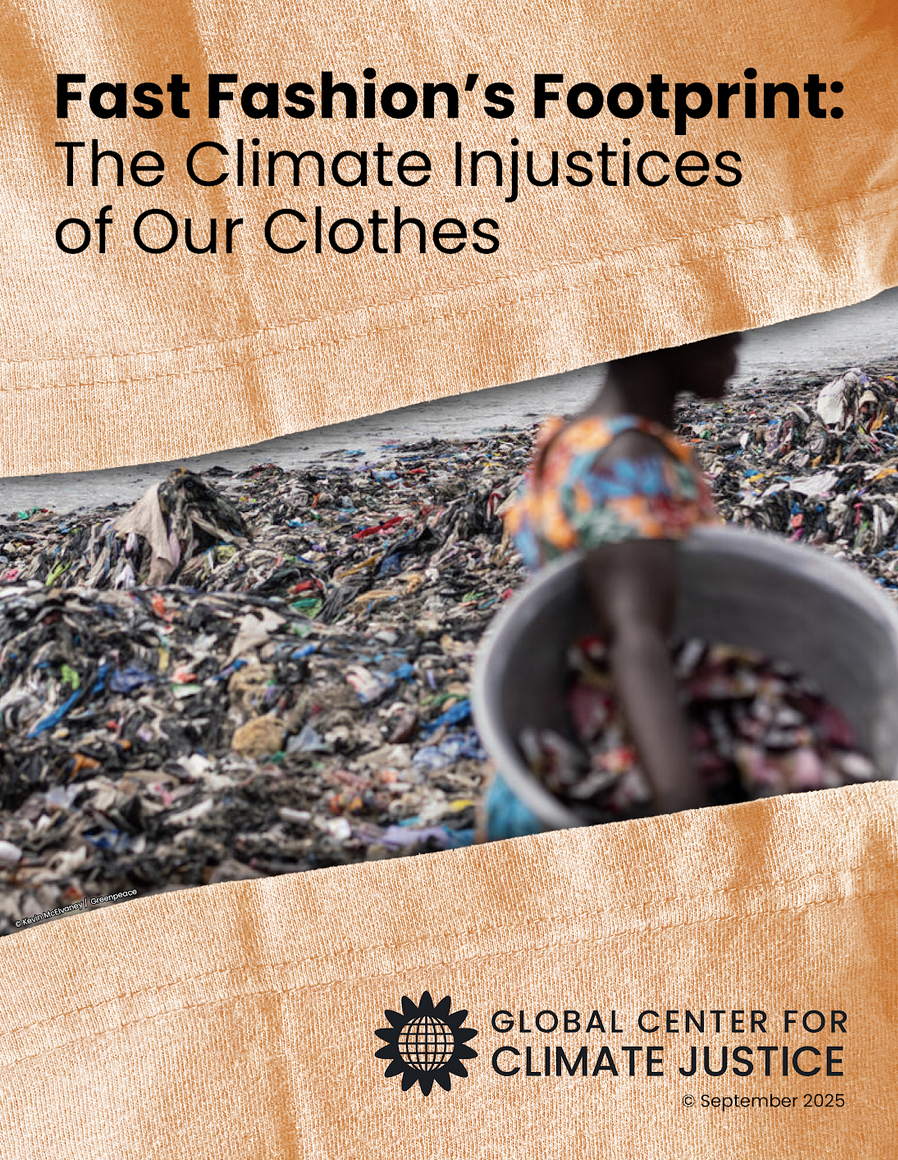
In the Center’s newest report, Fast Fashion's Footprint: The Climate Injustices in Our Clothes, author Leann Jenks exposes the far-reaching damage caused by the global Fast Fashion Industry, from ecosystem degradation and resource depletion to worker exploitation and impacts on our health.
The global Fast Fashion Industry, which began to take shape in the the 1980s, is characterized by the rapid and mass production of cheap, low quality garments enabled by undervalued labor. The industry is designed to satisfy ever-accelerating trend cycles and to keep consumers buying garments continuously. Instigated by the rise of corporate-led globalization, Western fashion companies began outsourcing labor and resources to minimize costs and maximize profit. While this is a “sweet” deal for consumers - and a lucrative one for businesses - in the Global North, globalization of the Fast Fashion Industry has exacerbated social and environmental injustices in the Global South while fueling the global climate crisis.
Accounting for an estimated 20% of global water pollution and 10% of greenhouse gas emissions, the Fast Fashion Industry currently produces around 92 million tonnes of textile waste a year.
In this report, we call upon businesses, governments, and consumers to work together in reforming the way our clothes are made and how they are worn. Despite the vastness and severity of this global system driven by corporate greed, movement toward a more just and sustainable future for fashion is possible through better regulation, corporate practices, worker empowerment, and consumer action. Although consumers help to drive the demand for new products, corporations are ultimately responsible for the environmental and economic impacts of their practices. By utilizing regenerative agriculture and sustainable fiber for textiles, paying living wages for garment workers, and producing within a closed-loop system, garment businesses already have the power to remain in operation while halting the exploitation of both people and the planet. Sustainable clothing companies like Patagonia and garment recycling initiatives like Rent the Runway are case-in-point that this is possible.
Government regulation also has a critical role to play in ensuring the enforcement of sustainable and fair business practices, and both in the US and the EU, there is now policy to help “close the loop” and make the fashion industry more sustainable. Consumers, for their part, can help pressure both governments and corporations.
Read the report to better understand the real costs of fast fashion, and gain insights into how a more sustainable and just Fashion Industry is being envisioned along every part of the supply chain.
About the Author

Driven by a newfound awareness of the environmental impact of clothing production, Leann Jenks has redirected her focus to sustainable fashion. Her role at the Center involves unraveling the complexities of fast fashion, aiming to explore new avenues for sustainability that align with her values.